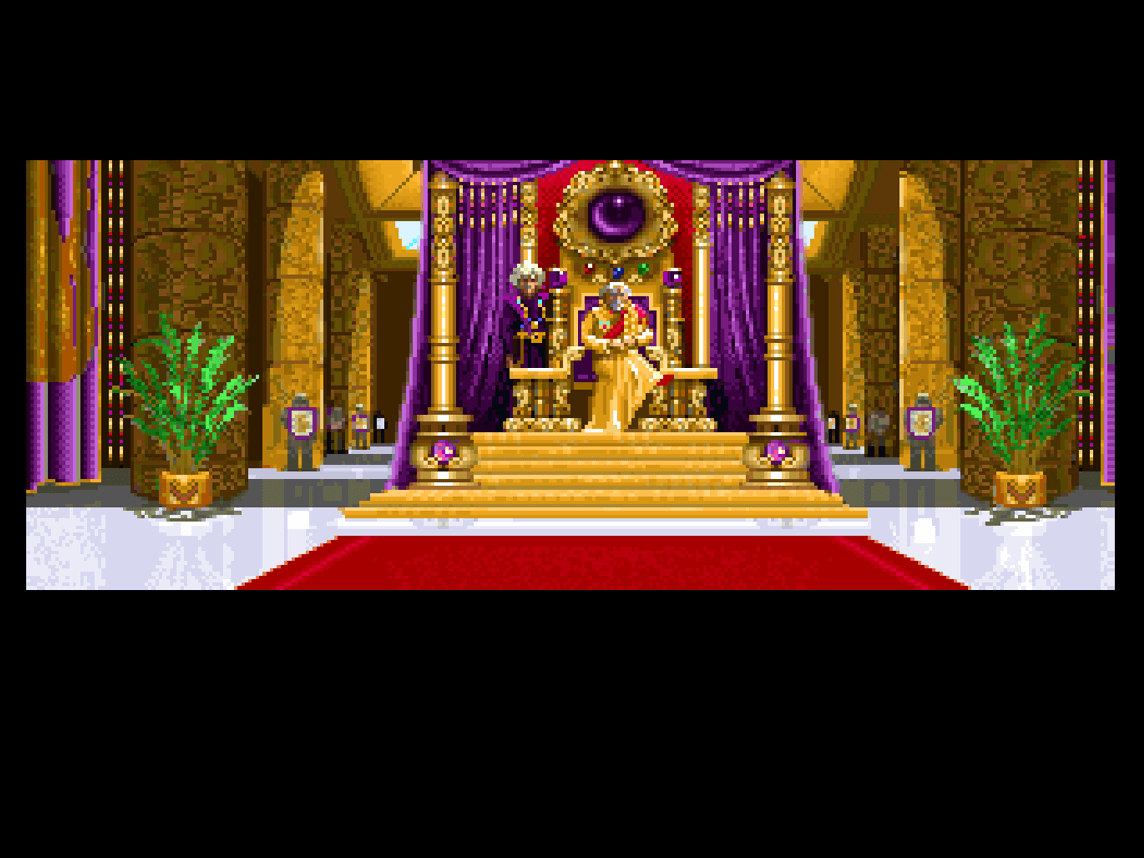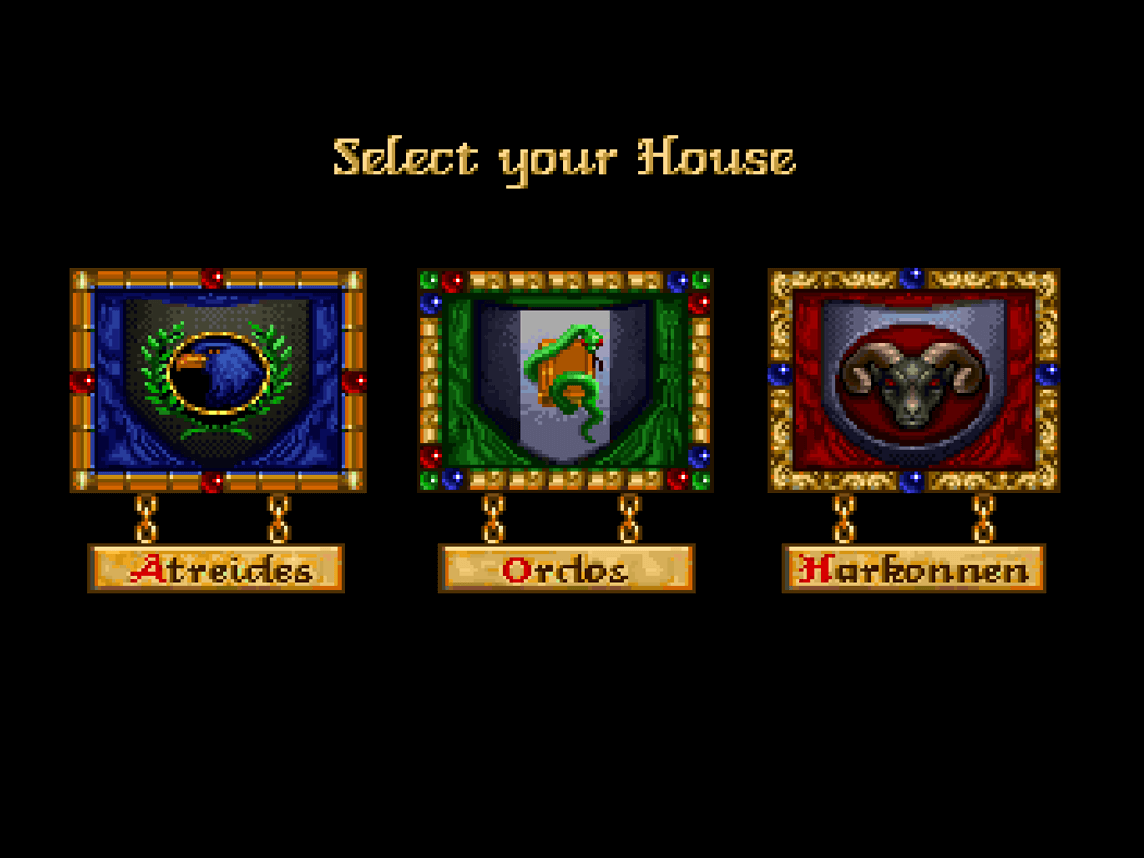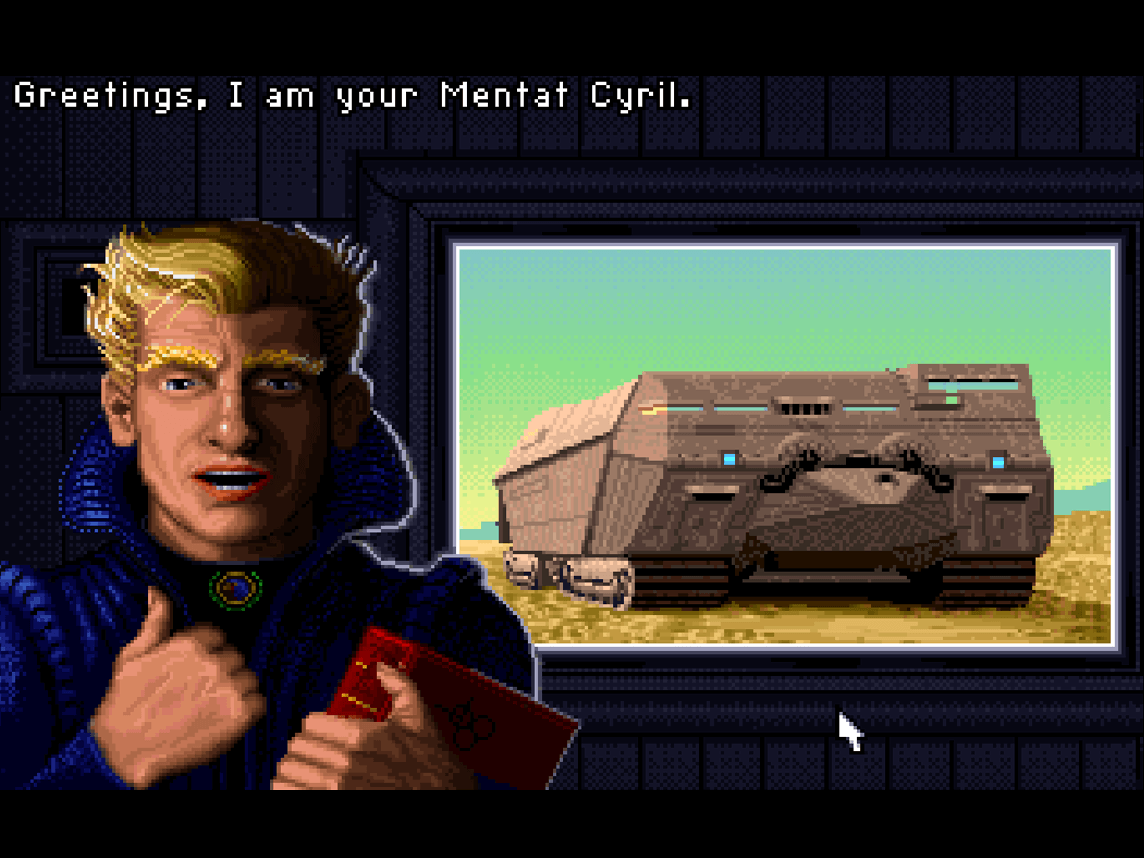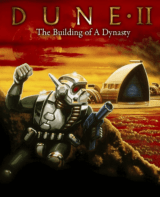- The Birth of a Strategy Icon (1992)
- The Plot
- A Desperate Emperor’s Gambit
- Immersive Gameplay
- Commanding a House
- Strategic Resource Management
- Variety in Houses and Units
- Influential Game Design
- Dune II’s Legacy
- Advancements and Limitations
- Strategic Depth and Superweapons
- Varied Production Capabilities
- Upgrades and Superweapons
- The Dune II Experience Beyond
- Endgame Challenges and Choices
- Play Dune II online
Developed by Westwood Studios and released by Virgin Games in December 1992, this game set the standard for future RTS titles like Command & Conquer and Warcraft.
The Birth of a Strategy Icon (1992)
Dune II emerges as a strategic masterpiece, drawing inspiration from David Lynch’s 1984 film Dune, based on Frank Herbert’s sci-fi novel.
While not the inaugural RTS game, Dune II shapes the genre, finding the delicate equilibrium between complexity and innovation, becoming the archetype for real-time strategy games.
The Plot
A Desperate Emperor’s Gambit
The narrative unfolds on the desert planet Arrakis, where Emperor Frederick IV of House Corrino seeks control of the valuable spice melange to settle his debts.
The three Houses—Atreides, Harkonnen, and the non-canon Ordos—vie for dominance by harvesting spice.
As the player assumes the role of a military commander, alliances shift, and war engulfs Arrakis in a struggle for supremacy.

Immersive Gameplay
Commanding a House
Players step into the shoes of a military commander from one of the three Houses—Atreides, Harkonnen, or Ordos. The mission begins with establishing a base, harvesting spice, and overcoming initial challenges.
Later, the focus shifts to assaulting and capturing enemy territories, leading to alliances and a final battle against formidable foes.
Strategic Resource Management
The core strategy involves harvesting spice, converting it into credits through refineries, and using the credits to build military units. The game introduces the concept of a fog of war that reveals the map progressively as units explore.
The presence of dangers like sandworms adds an extra layer of complexity to the resource-gathering process.

Variety in Houses and Units
Each House boasts unique units and weaponry, adding strategic depth. The game’s innovative technology tree allows players to access advanced units and weapons as they progress through higher missions.
The distinctive characteristics of each House, such as House Harkonnen’s Devastator tanks and House Ordos’s Deviator tank, contribute to varied gameplay.
Influential Game Design
Dune II’s Legacy
Dune II’s impact on RTS game design is immeasurable. It introduces elements that become staples in the genre, including a world map for mission selection, resource-gathering mechanisms, base and unit construction dependencies, and different factions with unique attributes.
The context-sensitive mouse cursor, a feature introduced in the Mega Drive/Genesis version, becomes a hallmark of subsequent RTS games.

Advancements and Limitations
While the game’s AI showcases early developments in RTS, it has certain limitations, such as a tendency to attack only one side of the player’s base and challenges in performing advanced maneuvers.
Despite these drawbacks, Dune II remains a pioneer in shaping the strategic gaming landscape.
Strategic Depth and Superweapons
Varied Production Capabilities
Each House’s production capabilities are distinct, adding strategic nuances. For instance, House Ordos has unique trikes called “Raider” trikes, while House Harkonnen constructs powerful quad bikes.
Players can capture an enemy factory to access special units from other Houses, fostering a dynamic battlefield.

Upgrades and Superweapons
Buildings, crucial for unit production, require concrete slabs for protection against wear. Upgrades to production buildings unlock advanced units and structures.
The final prize, the House Palace, enables the deployment of superweapons like House Harkonnen’s Death Hand and House Atreides’s Fremen infantry warriors.
The Dune II Experience Beyond
Endgame Challenges and Choices
Navigating through nine territories on the planet Arrakis, players face escalating challenges, ultimately leading to the endgame.
Choices made throughout the game determine the technology and weaponry available, shaping the final confrontations against formidable adversaries.

Play Dune II online
Play Dune II online on our gaming platform, directly in your we browser, for free!

